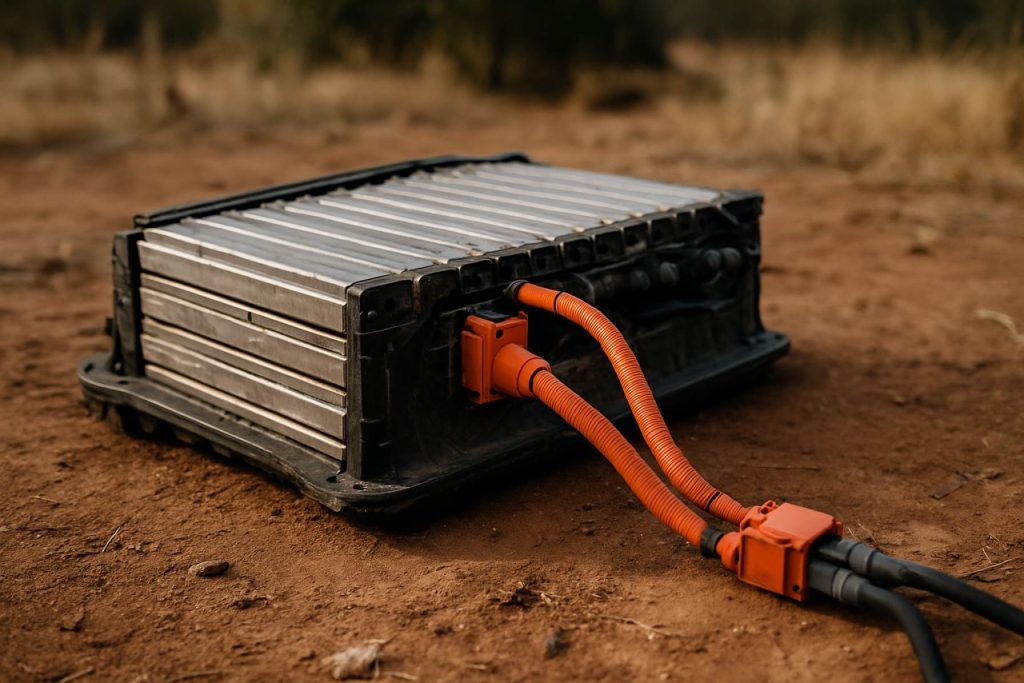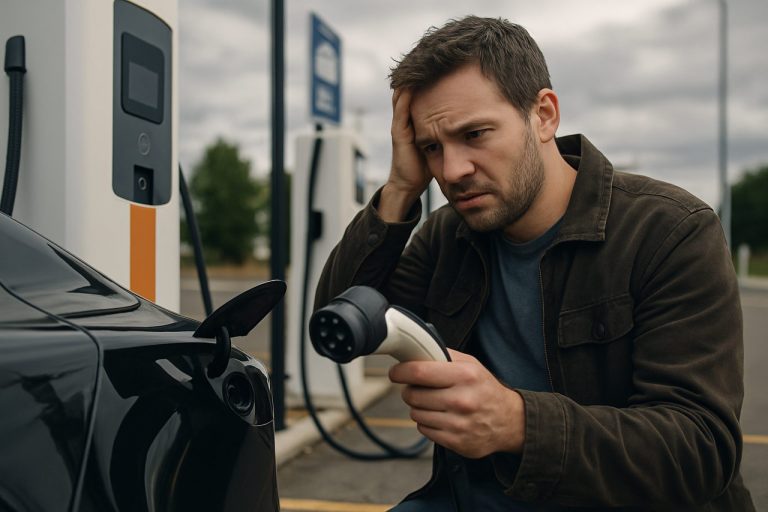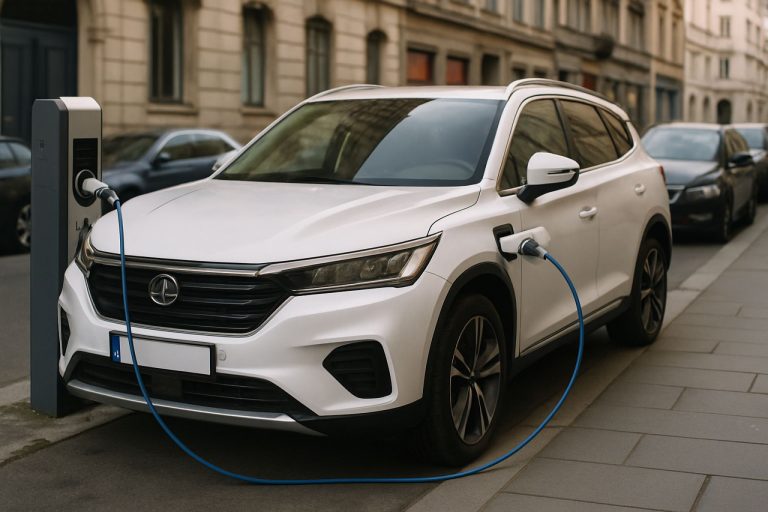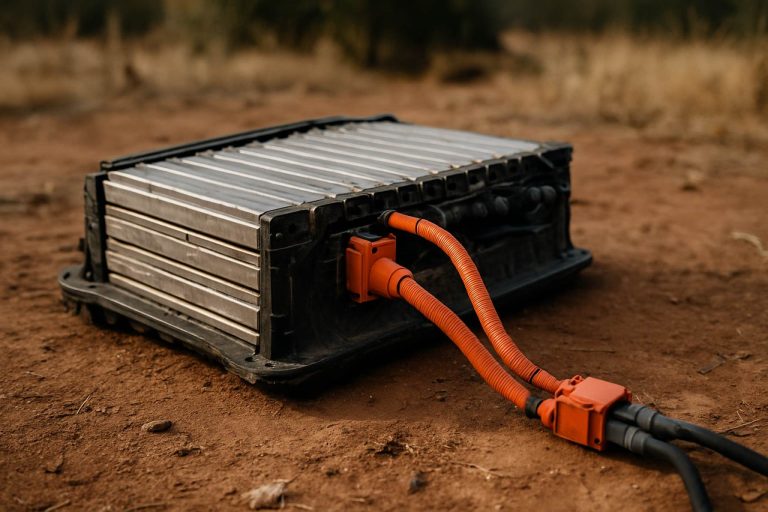
- Australia faces a looming challenge from rapidly increasing numbers of used electric vehicle (EV) batteries, projected to reach 360,000 tons by 2040.
- Discarded batteries can pose environmental threats, including fires and chemical leaks, unless managed responsibly.
- Experts advocate for a circular economy approach: repurpose batteries for secondary uses or efficiently recycle valuable materials like lithium, cobalt, and nickel.
- Repurposed batteries can support e-bikes, backup home power, and renewable energy storage, reducing waste and resource extraction.
- Progress depends on transparency—battery makers should provide critical battery health data to enable safe reuse and recycling.
- Policy shifts, such as battery “passports” and mandatory reporting, are emerging globally to enhance traceability and sustainability.
A silent revolution charges beneath Australia’s highways. Sleek electric vehicles (EVs) glide past, powered by lithium-ion cells, promising a cleaner tomorrow. Yet a growing dilemma follows in their wake: what happens to millions of batteries when they can’t hold a charge?
Australia’s clean energy experts are sounding the alarm—and revealing a glimmer of hope. Right now, over 100,000 electric vehicles silently traverse the continent, their numbers swelling daily. By 2030, researchers project these cars will leave 30,000 tons of spent batteries in their wake. That figure could hit a staggering 360,000 tons by 2040, threatening to overwhelm landfills, spark fires, and leak hazardous chemicals into communities.
The crisis, however, doubles as opportunity. Visionary minds at Edith Cowan University and the University of Technology Sydney are laying out a bold new blueprint: don’t scrap old batteries—give them a second life. For a country already pushing hard on renewable energy, this could transform what it means to go green.
The scheme slots retired batteries into tiers. Those with over 80% health could breathe new life into e-bikes and golf carts. Others, degraded but not defunct, could become backup power for homes or solar farms, storing intermittent energy for cloudy days. Even the most depleted cells aren’t trash—they’re treasure troves of cobalt, nickel, and lithium ready for retrieval and reuse.
Unlocking these possibilities, though, hinges on transparency. Most modern batteries seal away their secrets, data buried deep within circuitry. Without open records, recycling plants operate in the dark. Advocates insist that battery makers must release information crucial for safe repurposing—and countries are listening. The European Union is launching a digital “passport” for every electric vehicle by 2027, and California now obliges automakers to report battery health to recyclers.
Meanwhile, recycling technology races ahead. Plants now recover up to 95% of battery materials, setting a global standard for what’s possible. But experts lament that design choices still put performance and safety first, with little thought for how batteries’ final chapters will unfold.
This is more than a technical puzzle; it’s a test of collective intent. Will manufacturers embrace circular design, or leave mountains of toxic waste for future generations? Will Federal guidelines push for openness, or will progress stall behind closed circuits?
Australia’s stance on used EV batteries could ripple out globally. As scientists and policymakers debate, the public has a chance to shape what comes next. Responsible recycling, open data, and creative reuse aren’t just green buzzwords—they’re the keys to a cleaner, safer future.
As the world pivots to electric power, what we do with yesterday’s batteries may be just as important as how we power tomorrow’s vehicles.
For more on global technology shifts and sustainable solutions, explore trusted news at BBC. To learn about electric vehicles and battery policy, visit United Nations.
Key Takeaway: Old EV batteries aren’t waste—they’re a magnificent resource, one that must be unlocked by transparency, smart design, and bold policy. Turning this challenge into opportunity could define Australia’s climate legacy.
Australia’s EV Battery Revolution—Stunning Secrets, Shocking Risks & Big Money Opportunities Unveiled!
EV Battery Waste in Australia: More Than Scrap—A Goldmine Waiting for Action
———————————————————————-
As electric vehicles (EVs) silently redefine Australia’s highways, the country faces a looming question: what happens to the tidal wave of used lithium-ion batteries? Millions of EV batteries will hit retirement in the coming decades, and their fate may determine whether Australia leads or lags in the race for a sustainable future.
Here’s what you need to know—plus essential facts, expert tips, future forecasts, and even game-changing life hacks for EV owners, businesses, and policymakers.
The High-Stakes Problem: Battery Waste by the Numbers
– In 2024, Australia has over 100,000 EVs already on the road.
– By 2030: Projected 30,000 tons of end-of-life batteries.
– By 2040: That figure could explode to 360,000 tons (Source: CSIRO, Australian Battery Recycling Initiative).
– Hazard: Dumped batteries can leach toxic metals (cobalt, nickel, lithium) into the environment and cause thermal runaway fires.
Why Battery Repurposing Is a Game-Changer
Real-World Use Cases
– Second-Life Storage: Used EV batteries (with 70-80% capacity) are being refitted for home solar, workplace backup, and grid-level energy storage. For example, Nissan and Renault have pilot solar projects using repurposed batteries.
– Emerging Industry: Startups like Relectrify and Redwood Materials are building profitable businesses around large-scale battery “second life” applications and advanced recycling.
How-To: Give Your Old EV Battery a New Purpose
1. Battery Health Assessment: Get a battery diagnostic from your vehicle’s manufacturer or a certified technician.
2. Select Reuse Path:
– Above 80% capacity: Consider for e-bikes, golf carts, or off-grid energy.
– 60-80% capacity: Use as a home or small business battery storage system.
– <60% capacity: Recycle for material recovery.
3. Contact Recyclers: Find accredited battery recycling centers via United Nations or the Australian Battery Recycling Initiative.
Market & Industry Trends
– Global Battery Recycling Market Size: Estimated at USD 4.6 billion in 2023; expected to reach USD 23 billion by 2030 (Grand View Research).
– Advanced Recovery Tech: Modern plants claim up to 95% material extraction, making battery recycling one of the most efficient e-waste processes.
– Policy Accelerators: The EU’s digital “battery passport” (2027) and California’s legislation mean global pressure is on for transparency and circularity.
Reviews & Comparisons
| Solution | Pros | Cons |
|————————-|——————————–|——————————-|
| Direct Reuse (Second-life) | Lower environmental impact, cost-saving, immediate value | Limited by state of battery health, safety concerns |
| Material Recycling | Recovers valuable metals, reduces mining demand | Energy-intensive, safety risks, requires transparency from manufacturers |
| Landfill | Quick, cheap disposal | Catastrophic for environment; illegal in many jurisdictions |
Controversies & Limitations
– Manufacturer Secrecy: Most batteries are “black boxes,” making non-destructive health checks and safe disassembly tough.
– Design-for-Recycling: EV makers rarely design with recycling or reuse as a core feature; experts say this must change for a true circular economy.
– Economic Viability: Regional recycling may be uneconomic unless battery volumes rise or stricter laws push the issue.
Features, Sustainability, and Security
– Material Recovery: Modern hydrometallurgical processes can extract lithium, cobalt, and nickel, feeding next-gen battery supply chains.
– Safety: Storage of lightly-used batteries requires fire-resistant containment and regular health checks—a must for repurposing at scale.
– Environmental Win: Proper recycling avoids mining-related emissions and drastically cuts resource extraction impacts (Source: International Energy Agency – IEA).
Industry Forecast & Expert Insights
– According to BloombergNEF, “Second-life battery applications could meet up to 10% of global stationary storage demand by 2030.”
– Australian Government is expected to launch a coordinated national battery recycling framework by 2025 to align with international best practices.
Pressing Questions Answered
Q: Why not just make new batteries?
A: Mining new lithium and cobalt is resource-hungry and polluting. Recycling is up to 80% less carbon-intensive (Source: Environmental Science & Technology).
Q: Are old batteries dangerous?
A: Yes, without proper handling, old lithium-ion batteries can cause fires and toxic leaks. Australia’s fire brigades have responded to incidents from improperly stored cells.
Q: Will recycled batteries be as good as new?
A: For cars, no. But for lower-demand uses (home or backup storage), “second-life” cells perform admirably for several years.
Q: What can I do personally?
A: Use only certified recycling services, avoid storing old batteries at home, and lobby local representatives for battery accountability laws!
Quick Life Hacks & Actionable Recommendations
1. Check Your Battery Warranty: Some brands now offer “take-back” programs—ask your dealer.
2. Use Official Drop-Off Points: Avoid trashing batteries; locate safe disposal/recycling centers via national resources or BBC.
3. Spread the Word: Encourage workplace and community to recycle old EV and power tool batteries.
4. Stay Informed: Watch for new “battery passports” in EVs—these digital IDs will help you track battery health and responsible disposal.
The Bottom Line
Australia stands at a crossroads: how it manages its EV battery waste could turn a looming crisis into a world-beating resource opportunity. Transparency, innovative design, bold regulation, and public vigilance are key.
Want more clean tech updates? Visit BBC for global insights or United Nations for policy guides. Don’t let Australia’s battery revolution pass you by—get involved, stay informed, and turn yesterday’s batteries into tomorrow’s solutions!
Key Takeaway:
With smart policies, open data, and innovation, old EV batteries aren’t a threat—they’re an economic and environmental jackpot waiting to be unlocked.



